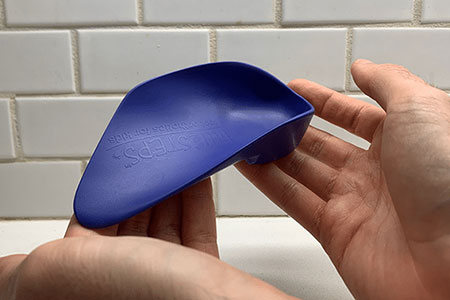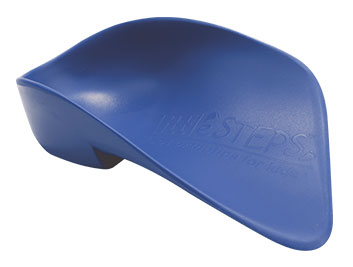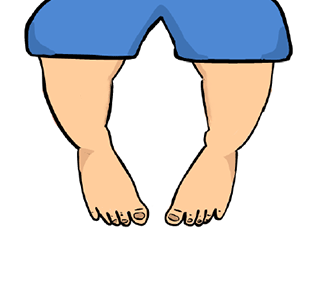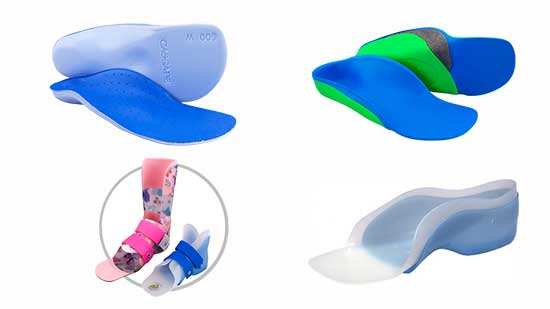Gait Plates for Kids – Improve Your Child’s Foot Posture and Walking Gait

Have you noticed that your child’s feet point inwards instead of straight ahead? Is your child tripping and falling often? Many children who are diagnosed with in-toeing are told by their medical professionals that their condition will resolve on its own. In some cases, it does, but in many instances, it doesn’t. There is an orthotic device called a gait plate that encourages the outward rotation of the feet, which can be really effective helping improve your child’s foot posture and walking gait.
Many families are frustrated as they are told that “in-toeing is a normal variant and that the child will eventually grow out of it”. In-toeing is one of the most common gait disorders in children, but this doesn’t mean that it should be left untreated. If this walking pattern is left untreated it might create a biomechanical imbalance which might be difficult to correct in adulthood.
I was told by a podiatrist that it’s important to be proactive with children and their treatment since the first 7 years of life are their “golden years of treatment opportunity”. During these years permanent structural changes of the foot and lower extremity may be relatively easily obtained with treatments such as orthotics, supportive shoes, and therapeutic exercises.
What Are Gait Plates?
Gait plates are orthotic devices made of a rigid or semi-rigid plastic shell that covers the plantar area, with an extension beyond fourth and fifth metatarsal heads.
When gait plates are fitted inside the correct pair of shoes, they can help correct foot posture and improve gait appearance in children.
How Does a Gait Plate Look Like?
One of the things I love the most about gait plates is how they deliver excellent results, and they are not as invasive as other orthotics such as AFOs or SMOs.

What Makes the Gait Plates that I Recommend Effective for In-Toeing?
The gait plates that I recommend encourage realignment of the hip in gait by providing a deep heel cup, medial rearfoot posting and skive.
These features help reduce in-toeing, improve hip and lower extremity strength, and in many instances creates a straighter, more normal gait.
Many medical professionals refer children to the shoe store that I work for to be fitted for the correct pair of shoes and orthotics. Over the years I became familiar with the best shoes and orthotics for children with in-toeing.
Are You Being Told to Wait for the Condition to Resolve on its Own?
There are many families who come to the shoe store concerned that their medical professionals are brushing off their children’s gait abnormalities as “normal variants”. In several cases, these families are told that there is nothing they can do and should just wait for the condition to resolve on its own.
There is a tendency of medical professionals minimizing gait abnormalities in children. The fact that some gait abnormalities in children might be somewhat common, that doesn’t make them normal.
After having fitted children’s shoes and orthotics for so many years, my goal has always been to optimize the function of the child, prevent future problems and try to significantly reduce or fully eliminate the child’s pain.
Will Gait Plates Fix Your Child’s In-Toeing?
I don’t know whether a pair of gait plates will help fix your child’s in-toeing condition, but what I can tell you is that they will definitely enable your child to function more efficiently. Our goal should be to allow children with in-toeing to participate at a more appropriate level in normal activities.
Are Gait Plates a Cosmetic Fix or Functional Change?
I believe that gait plates provide a functional change. Your child’s foot might point inwards when going barefoot, but when wearing supportive shoes and gait plates that changes things substantially by putting the feet in a straighter position.
I like to make the analogy that gait plates and supportive shoes are like glasses for bad eyes. Wearing glasses won’t cure your eyes, but it will make you see better and function normally. Gait plates are like glasses for your child’s feet.
How Early Should Parents Treat In-Toeing?
This really depends on the age of the child and the severity of the condition. Remember that your goal should be to make sure that the gait function of the child is optimized. I suggest that you ask your podiatrist whether your child might be ready for wearing gait plates.
Best Gait Plates for Kids
The gait plate orthotic that I recommend below provides an affordable alternative to custom orthoses and encourages the feet to turn outward and straighten.
You Must Enter a Referral Code to Order this Orthotic
To place an order for littleSTEPS® Orthotics, you must submit a Referral Code during the ordering process. Enter the referral code JVFCS100121
What Gait Plate Size Should You Order?
The size chart below shows what gait plate size to order based on your child’s shoe size:

Are You Unsure About What Gait Plate Size You Should Order?
Don’t hesitate to contact me if you are unsure about which gait plate size you should order:
What Shoes Work Best with Gait Plates?
First of all, you won’t have to remove the original insoles of your child’s shoes before placing the orthotics inside of the shoes.
Your children’s shoes must provide a substantial outsole with a stable base of support, but they need to be very lightweight and flexible at the same time. I also recommend getting shoes with shoelaces instead of an alternative closure as the shoes must be able to hold the child’s foot down onto the orthotic firmly.
Keep in mind that the orthotics that I recommend will be effective for your child as long as they are fitted inside the correct types of shoes. Don’t forget that the shoes and the orthotics work together in helping treat and prevent your child’s out-toeing condition.
My Final Thoughts
Gait plates combined with correctly fitting shoes are useful tools in the treatment of in-toed gait in children.
I have noticed that many medical professionals tend to describe children’s foot problems as “normal variants” or “growing pains”. I strongly suggest that you get a second opinion when you are told that there is noting that you can do but wait for your child’s condition to resolve on its own. As with every other field, there are some medical professionals that are more experienced or might have different approaches than others.
It’s important that parents work closely with their medical professionals to take every attempt to improve the child’s physical situation both functionally and developmentally. Physical therapy using gentle stretching and strengthening is often part of the treatment plan too.




